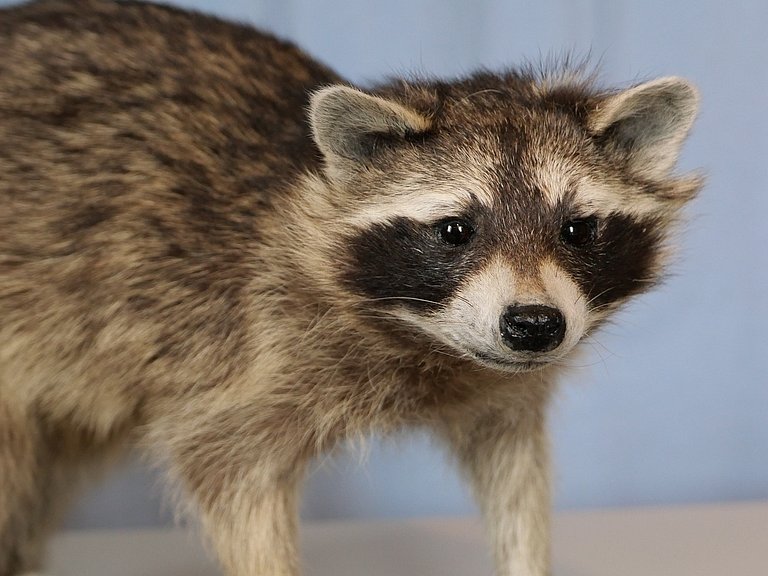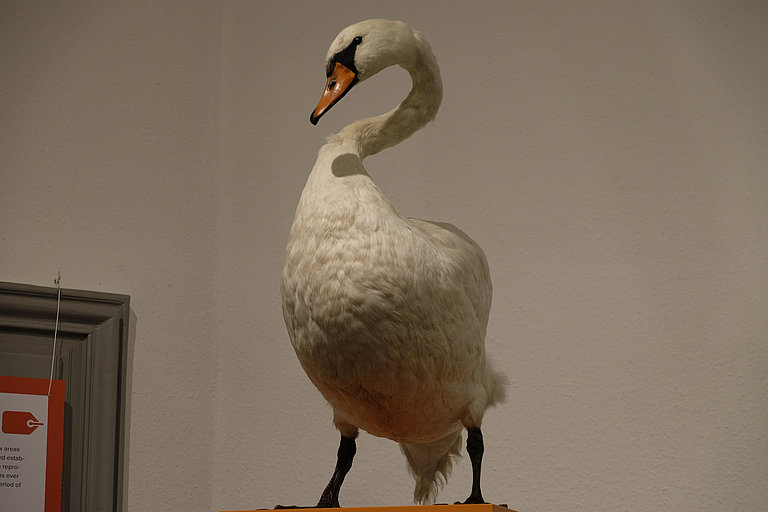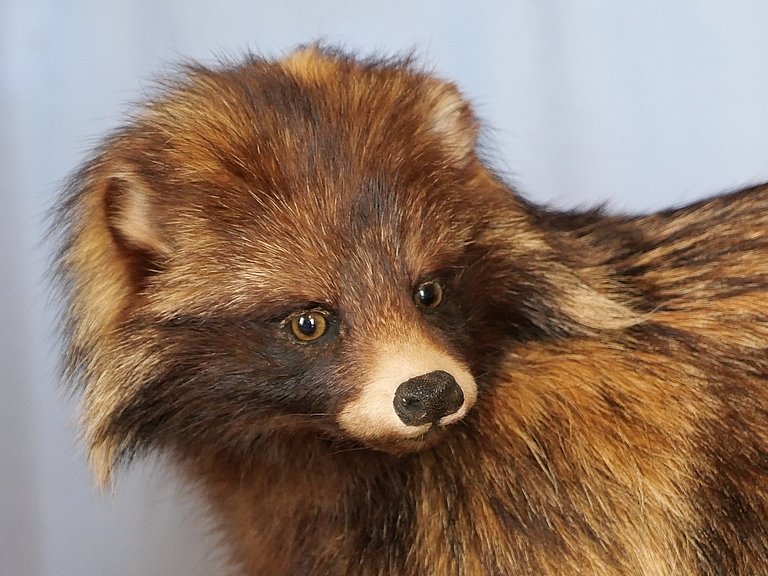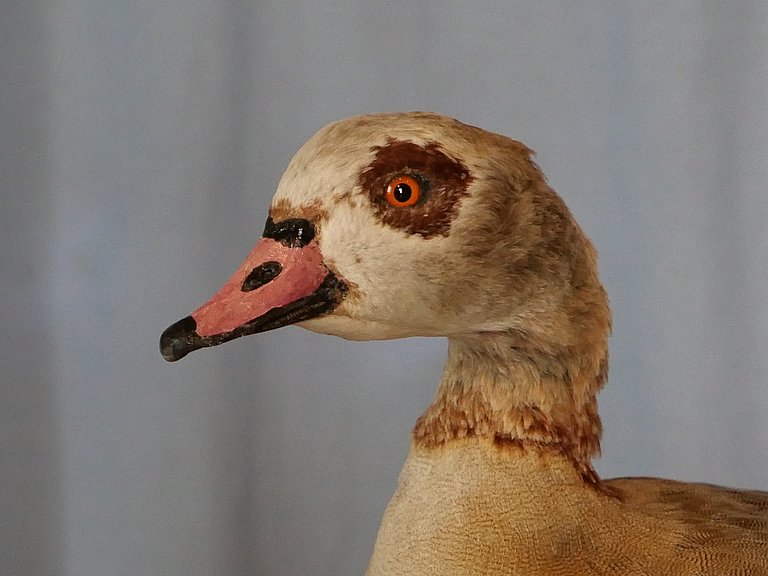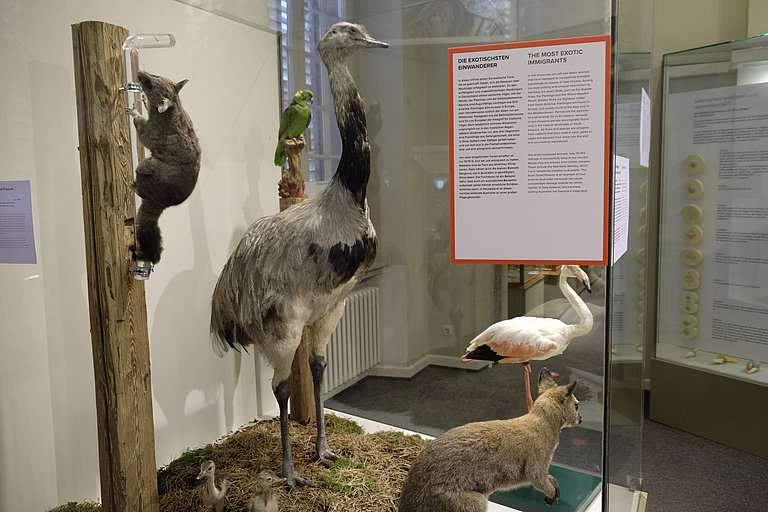Neozoa. Animal Newcomers & Native Exotics
Exhibition flyer
Canada, Nile and Ruddy Geese spread out in Düsseldorf. Collared parakeets loudly invade the Königsallee. How could this happen? New animal species have been appearing in Germany for decades. Meanwhile, the amount of new exotics appearing in Central Europe at ever shorter intervals is remarkable. Over 1,000 alien species have been registered in Germany in recent decades, 250 of which have been able to establish themselves permanently and become native to our country as newcomers.
Some species, such as the North American mink or the marsh beaver, were introduced to Germany through fur farming and deliberately released. Thousands of specimens of the tanuki, which originated in China and Japan, were released in Russia; their offspring migrated westward and have been native to our country for over 60 years. Other new citizens are refugees from zoos or private animal husbandry, such as the South American nandu or the North American raccoon. Some of them are inconspicuous additions to our wildlife, others may disturb us as cultural successors, such as Canada geese in the park or raccoons in attics. Some newcomers, however, cause serious problems: Nutrias destabilize dikes, muntjacs eat forests bare, and Asian longhorned beetles threaten our street trees. Animals that cause great economic and ecological damage are called invasive species and are sanctioned throughout Europe.
The exhibition at the Natural History Museum highlights exciting phenomena of species return, as well as foreign exotic animals and climate migrants, and introduces the new and unknown animal world in Germany.

